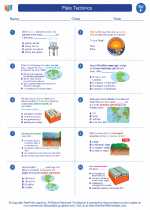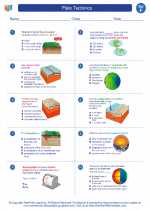Convection
Convection is the transfer of heat through the movement of fluids such as liquids and gases. This transfer of heat occurs through the movement of the fluid itself, which can result in the circulation of the fluid and the distribution of heat throughout the medium.
How Convection Works
Convection occurs when a fluid is heated, causing it to become less dense and rise. As the fluid rises, it carries heat with it. This creates a convection current, where the heated fluid moves upwards, while cooler, denser fluid moves downwards to replace it. This cycle continues, resulting in the transfer of heat throughout the fluid.
Examples of Convection
Convection can be observed in various natural phenomena, such as the heating of the Earth's atmosphere, which creates air currents and wind. It is also responsible for the movement of molten rock in the Earth's mantle, as well as the circulation of water in the oceans and the atmosphere.
Study Guide
- Define convection and explain how it differs from conduction and radiation.
- Describe the process of convection and the role of fluid movement in heat transfer.
- Identify natural phenomena that involve convection, and explain how convection contributes to these processes.
- Discuss the impact of convection on weather patterns, ocean currents, and geological processes.
- Compare and contrast forced convection (e.g., in a fan or a pump) with natural convection (e.g., in the atmosphere or a boiling pot of water).
- Explain how convection is utilized in everyday life, such as in heating and cooling systems.
By understanding the principles of convection and its role in heat transfer, you can gain insight into various natural processes and the applications of convection in technology and everyday life.
[Convection] Related Worksheets and Study Guides:
.◂Science Worksheets and Study Guides Sixth Grade. Plate Tectonics

 Worksheet/Answer key
Worksheet/Answer key
 Worksheet/Answer key
Worksheet/Answer key
 Vocabulary/Answer key
Vocabulary/Answer key
 Vocabulary/Answer key
Vocabulary/Answer key
 Vocabulary/Answer key
Vocabulary/Answer key
 Vocabulary/Answer key
Vocabulary/Answer key
